
How to Use Soil Temperature Sensor : Examples, Pinouts, and Specs
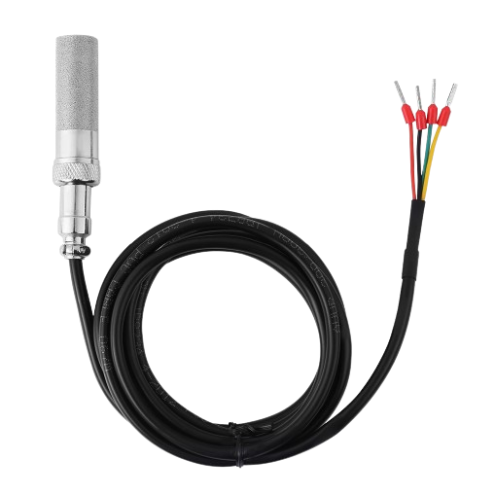
 Design with Soil Temperature Sensor in Cirkit Designer
Design with Soil Temperature Sensor in Cirkit DesignerIntroduction
The Soil Temperature Sensor is an electronic device specifically designed to measure the temperature of soil. It is a crucial tool in various applications such as precision agriculture, gardening, environmental monitoring, and research. By providing accurate temperature readings, it helps in understanding soil conditions, which is vital for plant growth, seed germination rates, and the study of soil health and ecosystem dynamics.
Explore Projects Built with Soil Temperature Sensor
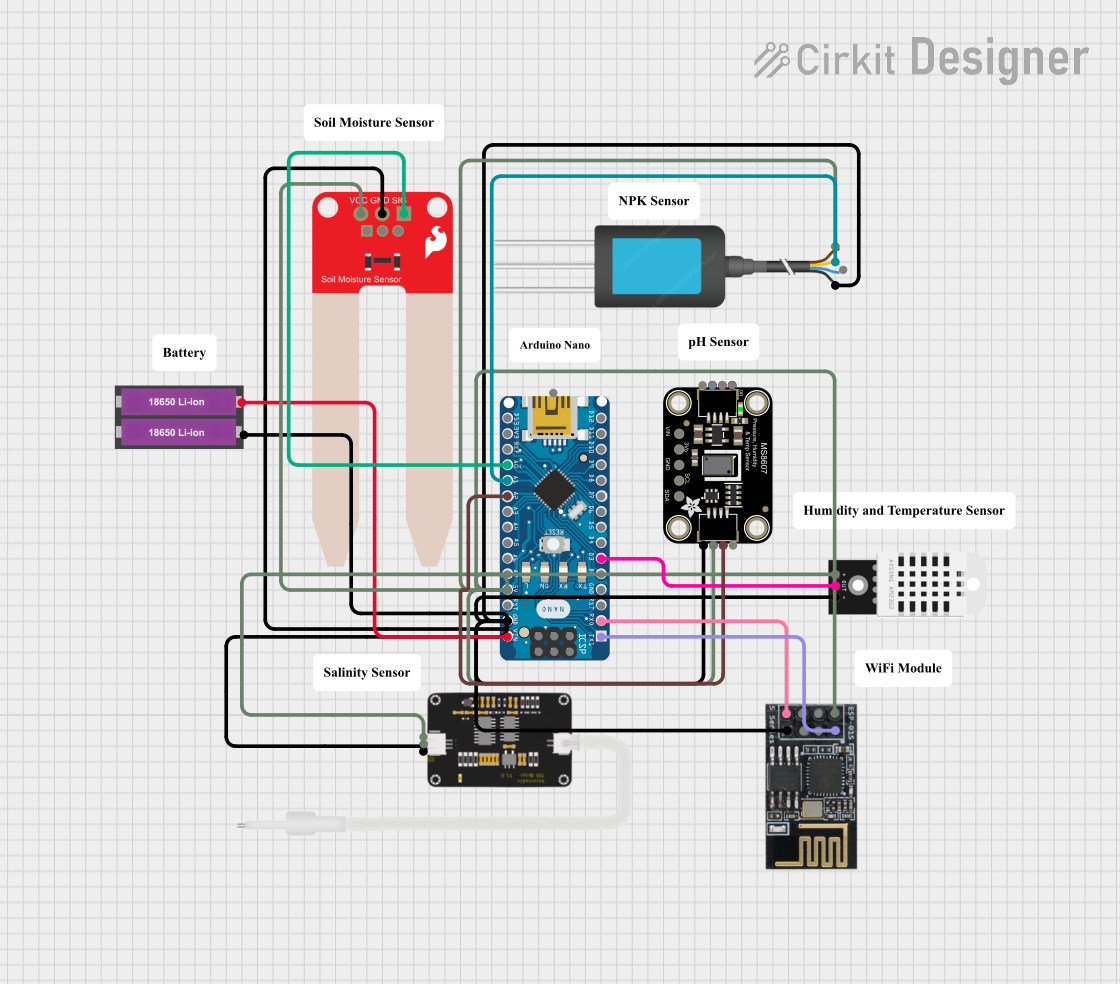
 Open Project in Cirkit Designer
Open Project in Cirkit Designer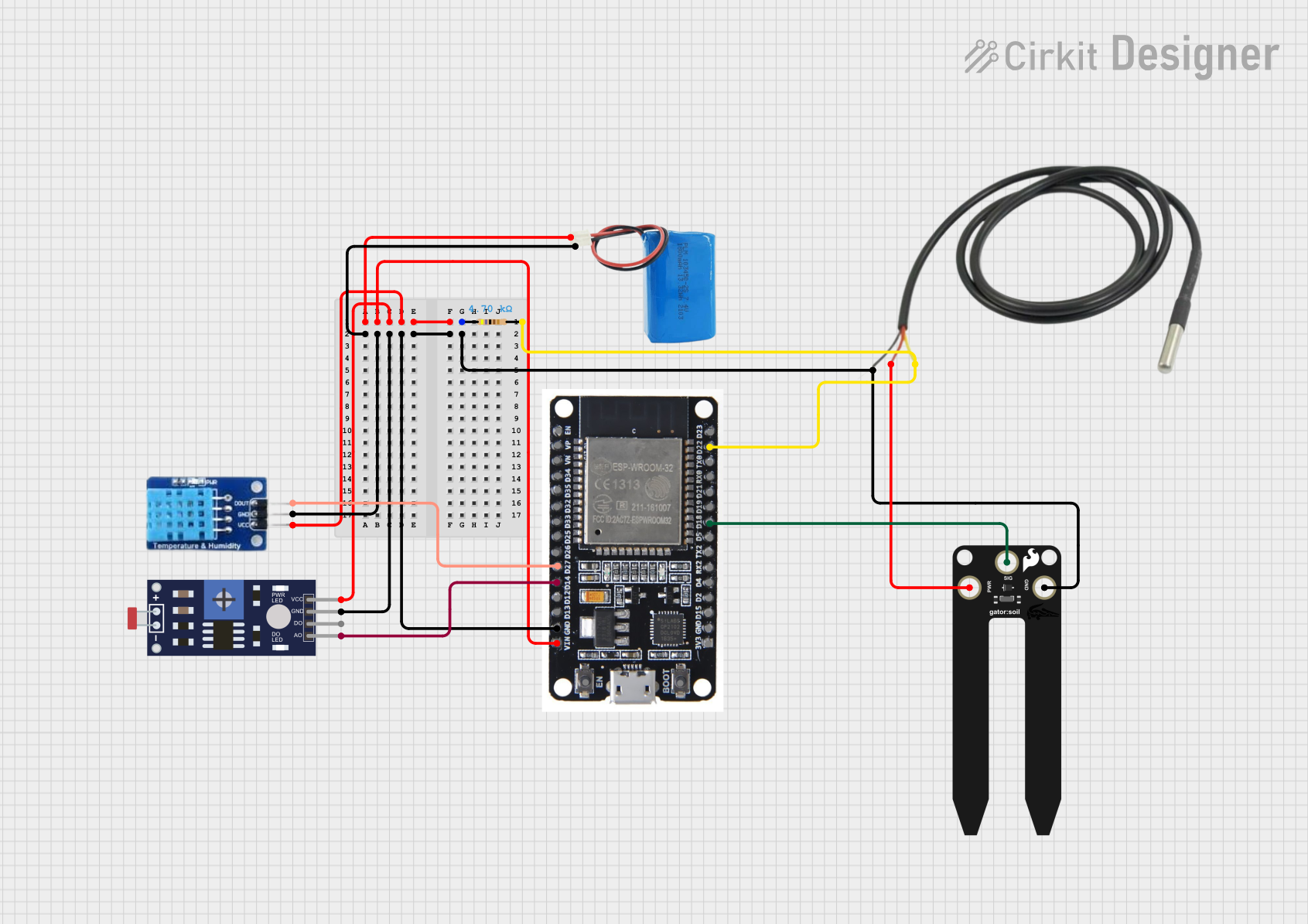
 Open Project in Cirkit Designer
Open Project in Cirkit Designer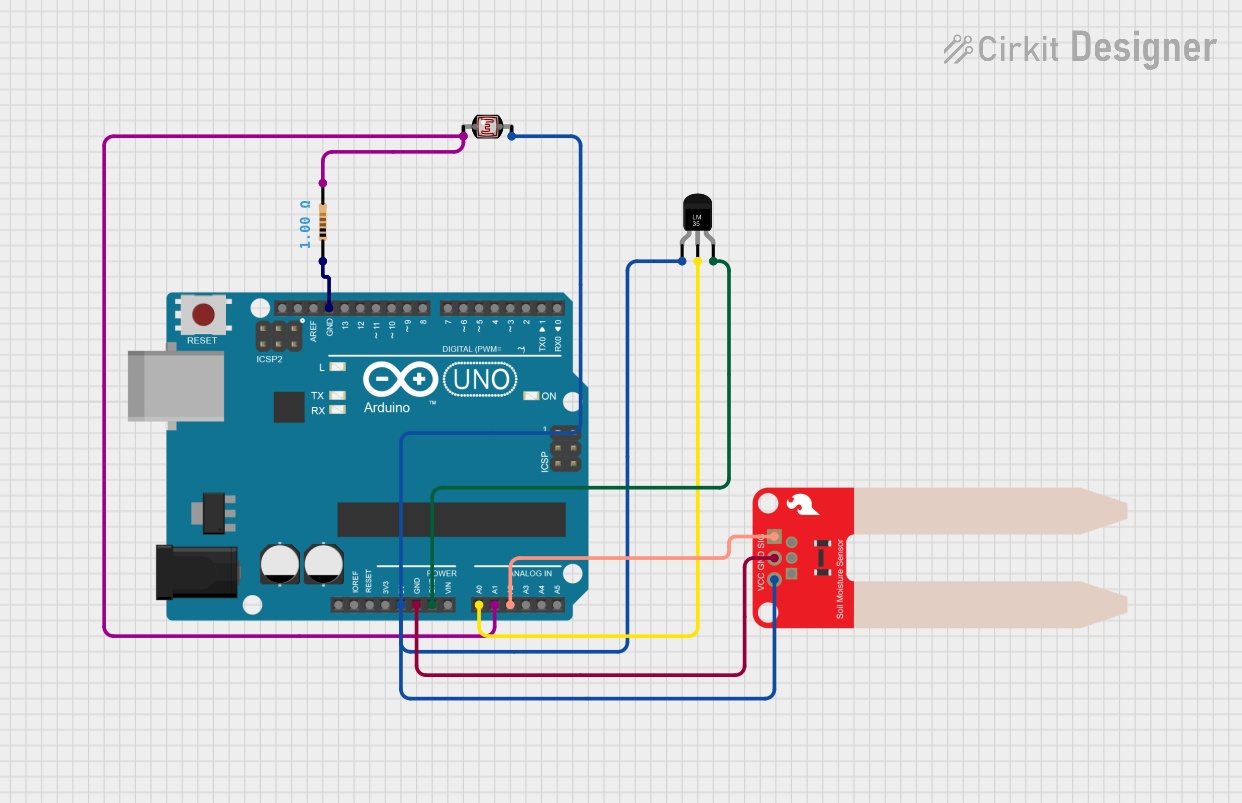
 Open Project in Cirkit Designer
Open Project in Cirkit Designer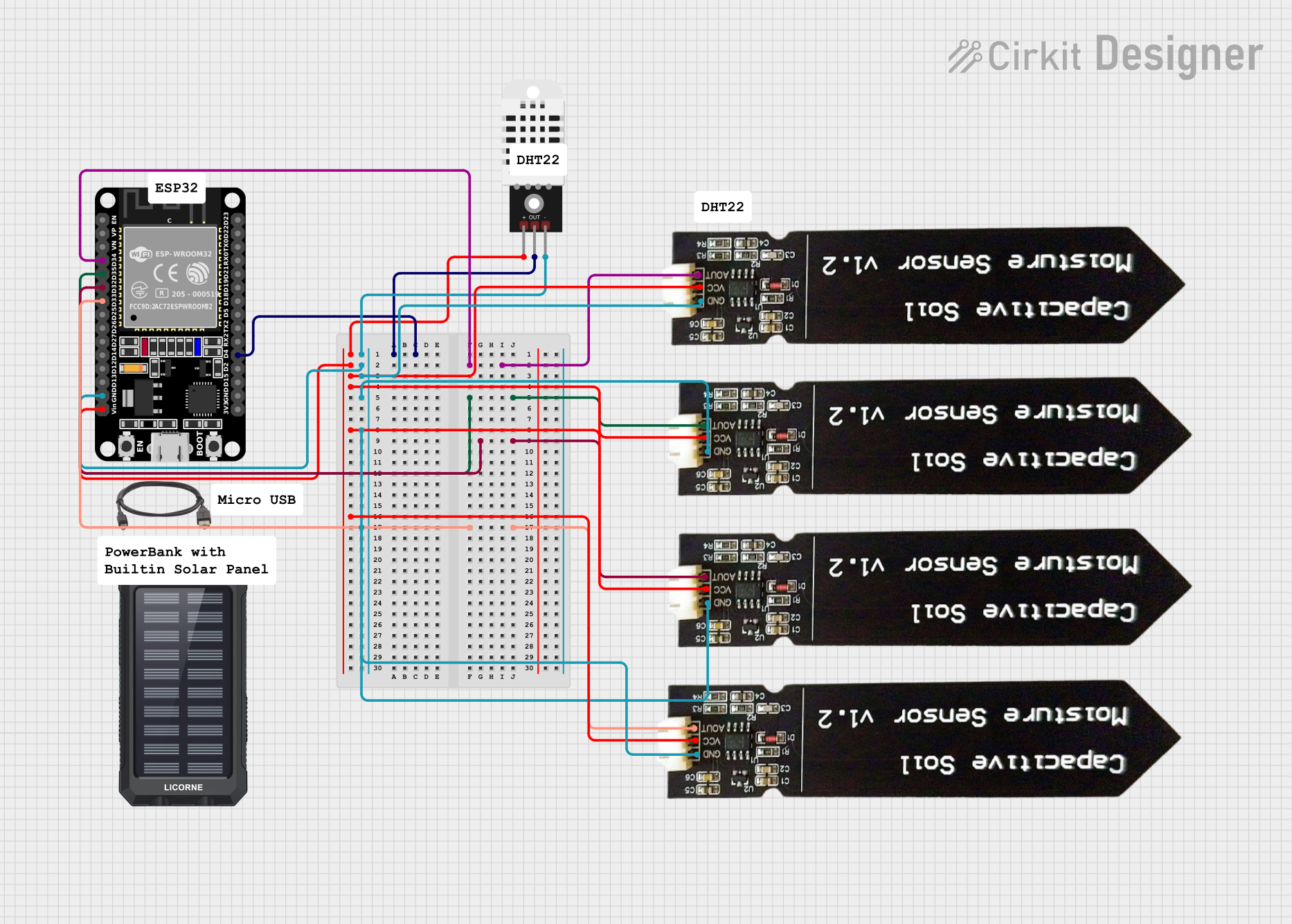
 Open Project in Cirkit Designer
Open Project in Cirkit DesignerExplore Projects Built with Soil Temperature Sensor

 Open Project in Cirkit Designer
Open Project in Cirkit Designer
 Open Project in Cirkit Designer
Open Project in Cirkit Designer
 Open Project in Cirkit Designer
Open Project in Cirkit Designer
 Open Project in Cirkit Designer
Open Project in Cirkit DesignerCommon Applications and Use Cases
- Agriculture: Monitoring soil temperature to determine the best planting times and to ensure optimal growth conditions.
- Gardening: Assisting gardeners in managing planting schedules and improving plant care.
- Environmental Monitoring: Studying climate change effects on soil temperature patterns.
- Research: Collecting data for scientific studies related to soil and environmental sciences.
Technical Specifications
Key Technical Details
- Measurement Range: -40°C to +125°C
- Accuracy: ±0.5°C
- Output: Analog voltage proportional to temperature
- Supply Voltage: 3.3V to 5V DC
- Current Consumption: 5mA (typical)
Pin Configuration and Descriptions
| Pin Number | Name | Description |
|---|---|---|
| 1 | VCC | Power supply (3.3V to 5V DC) |
| 2 | OUT | Analog voltage output |
| 3 | GND | Ground connection |
Usage Instructions
How to Use the Component in a Circuit
- Power Supply: Connect the VCC pin to a 3.3V or 5V power supply.
- Ground: Connect the GND pin to the ground of the power supply.
- Signal Output: Connect the OUT pin to an analog input on a microcontroller, such as an Arduino UNO, to read the temperature values.
Important Considerations and Best Practices
- Ensure that the sensor is properly calibrated for accurate readings.
- Avoid exposing the sensor to direct sunlight or moisture, which could affect its performance.
- Use shielded cables for longer distances to minimize noise and interference.
- Implement proper filtering in software to smooth out any fluctuations in the readings.
Example Code for Arduino UNO
// Soil Temperature Sensor Example for Arduino UNO
const int sensorPin = A0; // Analog input pin connected to the sensor's output
void setup() {
Serial.begin(9600); // Initialize serial communication at 9600 baud rate
}
void loop() {
int sensorValue = analogRead(sensorPin); // Read the sensor output
float voltage = sensorValue * (5.0 / 1023.0); // Convert to voltage
float temperature = (voltage - 0.5) * 100; // Convert voltage to temperature
// Print the temperature in Celsius
Serial.print("Soil Temperature: ");
Serial.print(temperature);
Serial.println(" C");
delay(1000); // Wait for a second before reading again
}
Troubleshooting and FAQs
Common Issues Users Might Face
- Inaccurate Readings: If the sensor provides inaccurate readings, check for proper calibration and ensure that the sensor is not exposed to external heat sources.
- No Output: Verify that the sensor is correctly powered and that all connections are secure. Also, check the integrity of the sensor if it has been in use for an extended period.
Solutions and Tips for Troubleshooting
- Calibration: Perform a calibration using a known temperature source to ensure accuracy.
- Cable Length: Keep the cable length as short as possible to prevent signal degradation.
- Environmental Protection: Use waterproof enclosures if the sensor is to be used in wet conditions.
FAQs
Q: Can the sensor be used in water? A: This sensor is designed for soil temperature measurement and may not be waterproof. Check the manufacturer's specifications for environmental protection details.
Q: How often should the sensor be calibrated? A: Calibration frequency depends on usage and environmental conditions. It is recommended to calibrate the sensor before each critical use or at least once a year.
Q: What is the response time of the sensor? A: The response time can vary based on the sensor design and manufacturer. Refer to the datasheet for specific response time information.